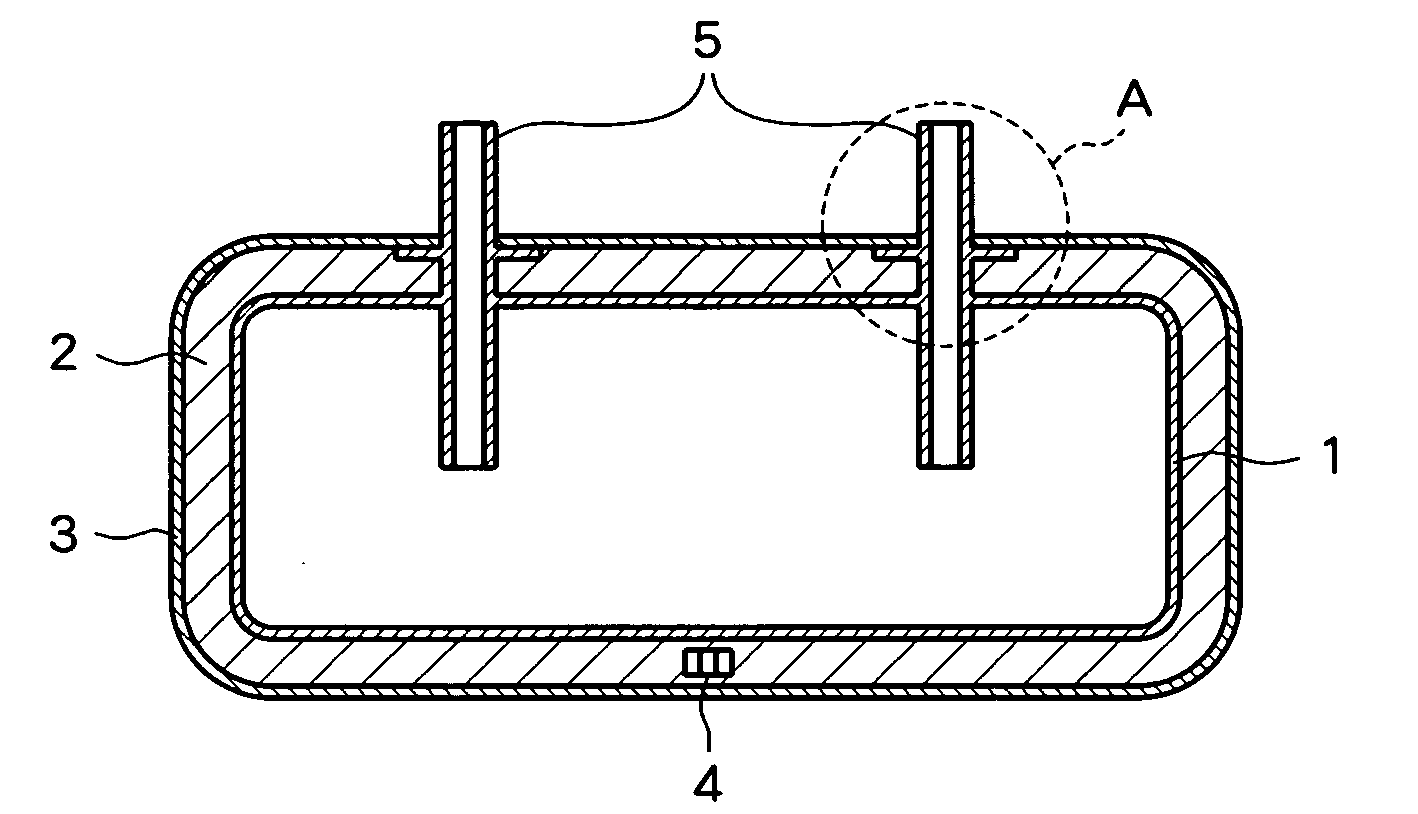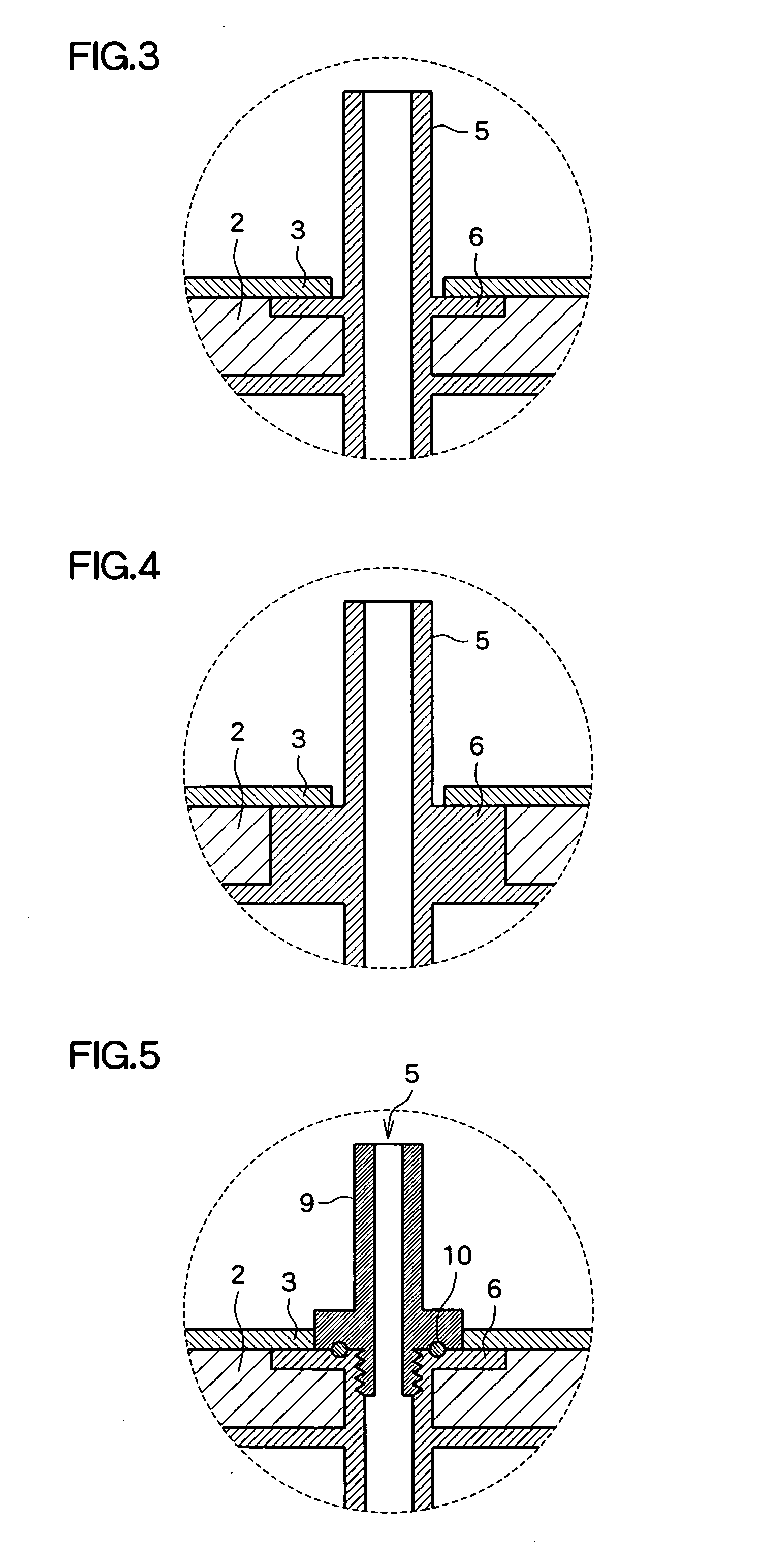Heat-insulating container and method for manufacturing same
- Summary
- Abstract
- Description
- Claims
- Application Information
AI Technical Summary
Benefits of technology
Problems solved by technology
Method used
Image
Examples
examples
[0057]The detailed manufacturing method of the heat-insulating container of the present invention will be described below, but is not provided by way of limitation.
[0058]A rectangular polyethylene container having an internal volume of approximate 2.6 L and a thickness of 8 mm was used as the inside container 1 of the present invention. Liquid inlet and outlet opening part 5 having an external diameter of 18.5 mm, an internal diameter of 13 mm, and a height of 30 mm were formed in one surface of the inside container 1. Flanges 6 having an external diameter of 12 mm and a thickness of 3 mm were formed on the inlet and outlet opening part 5. ABS resin layers were formed on the surfaces of the inside container 1 except at the surfaces of the flanges 6. Next, an electroless nickel plating layer was formed, and an electrolytic copper plating layer was further formed, so that a gas barrier layer was formed.
[0059]A film having a multi-layer structure composed of a polyethylene terephthalat...
PUM
| Property | Measurement | Unit |
|---|---|---|
| Temperature | aaaaa | aaaaa |
| Thickness | aaaaa | aaaaa |
| Pressure | aaaaa | aaaaa |
Abstract
Description
Claims
Application Information
 Login to View More
Login to View More - R&D
- Intellectual Property
- Life Sciences
- Materials
- Tech Scout
- Unparalleled Data Quality
- Higher Quality Content
- 60% Fewer Hallucinations
Browse by: Latest US Patents, China's latest patents, Technical Efficacy Thesaurus, Application Domain, Technology Topic, Popular Technical Reports.
© 2025 PatSnap. All rights reserved.Legal|Privacy policy|Modern Slavery Act Transparency Statement|Sitemap|About US| Contact US: help@patsnap.com



